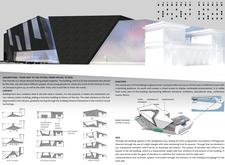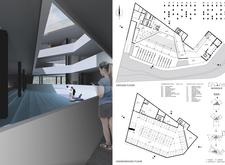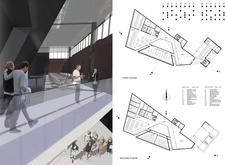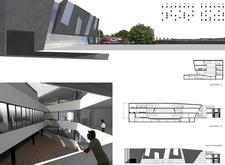5 key facts about this project
## Project Overview
The Internet Museum is located adjacent to a nineteenth-century railway station, creating a dialogue between historical and contemporary architecture. The intent is to serve as a cultural bridge connecting the past with the future, reflecting the web's role as a connective network for individuals and communities. The design seeks to engage a diverse audience, particularly younger generations who are integral to the digital landscape.
### Architectural Form and Structure
The building features a striking geometric form characterized by slanted angles and irregular shapes, which contribute to its dynamic silhouette against the skyline. The primary materials include concrete for structural integrity, extensive glass for transparency and natural light, and brick to echo the historical context of the adjacent railway station. The south facade functions as a multimedia display, engaging passersby with dynamic content that relates to the museum's mission.
### Spatial Organization and Functionality
A central glazed courtyard serves as a multifunctional space that fosters interaction and collaboration among visitors. The design includes dedicated zones for libraries, workshops, and flexible exhibition galleries, accommodating diverse themes related to technology and society. Additionally, conference rooms and leisure areas, such as cafés and lounges, contribute to the museum's role as a community hub and a venue for events and educational initiatives.
Through its architectural and spatial strategies, the design emphasizes connectivity and exploration, allowing visitors to navigate a curated experience that mirrors the structure and complexity of the internet itself.






















































